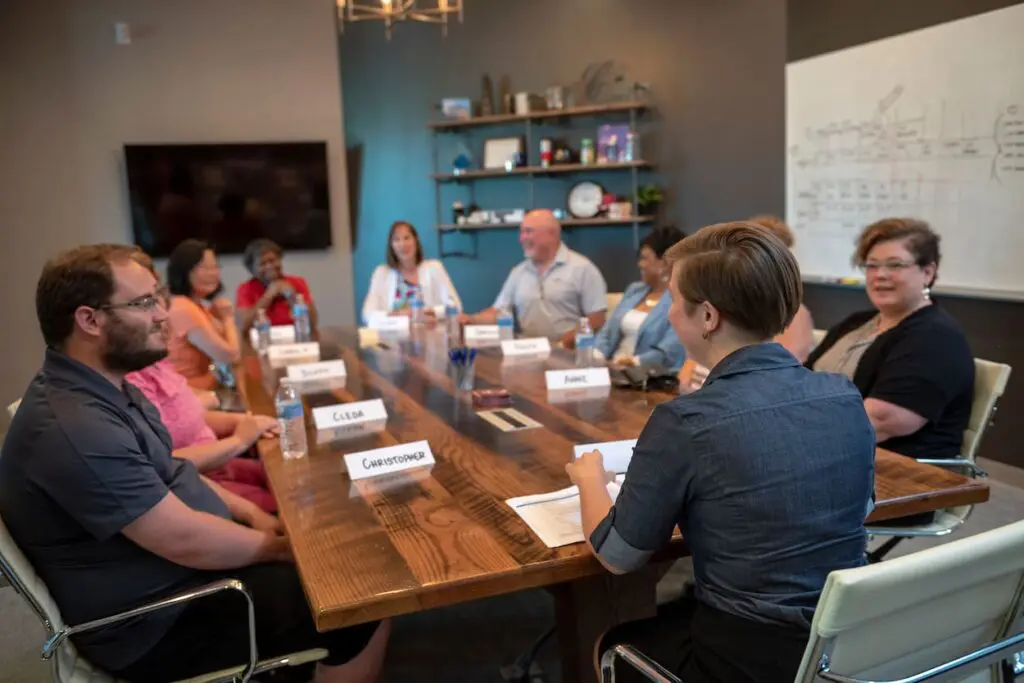If asked to imagine a focus group, you may imagine a glossy scene from Mad Men, a blind taste test or a car commercial (“real people, not actors”). The thing is, these are typically high-value productions. Recruiting, facility costs, incentives, and specialized equipment must be arranged.
What if you’re trying to test the waters and conduct a focus group for your own venture, but on a shoestring budget? Insights can nonetheless be gathered in DIY groups. Once your audience is selected (remember to over-recruit by 25% to accommodate no-shows), here are some tips from my 20+ years of moderating:
Group size: I suggest seating no more than 8 to 10 people. Any more is hard to corral even for the most experienced moderator. Resist the temptation to seat as many people as possible in this type of research. Remember – you want meaningful insights!
Ground rules: Set clear and simple expectations up front, when people sit down. Tell the participants why they are there and expectations: you’re there to gather a wide variety of feedback, so there are no wrong answers. Everyone is expected to contribute. They need to feel you’re running the show but feel comfortable. Explain that they need to be mindful of the microphones and speak one at a time, etc. Set the tone and be in charge. This will help keep your groups in line.
Give permission to be negative: If you’re affiliated with the product/topic in question, participants might hesitate to share negative opinions – they won’t want to offend you. Give them permission up front to say whatever they want.
Master time: Plan out everything in advance. And I mean everything! Down to the exact minute. There’s nothing worse than realizing (when it’s too late) you don’t have sufficient time (for example) to review logos or taglines when it was super important you do so, meaning someone (usually a stakeholder) will be disappointed.
Don’t breeze through introductions: Quite honestly, introductions may be the most important part of a group. They let people get comfortable and start talking – an important first step to learn about participants’ voices and personalities. Are they shy? Long-winded? Eager to impress? Obnoxious? Introductions are the first stop to gathering insights on the respondents seated at the table.
Cover the big stuff: For groups of only 60 minutes, identify about 4 things that are must-haves. Spend a good amount of time (7-10 min) on each. You can always add a new topic or question if you have extra time. Remember, your introductions will take about 7 to 10 minutes. That leaves 50 minutes for discussion.
Short questions, long answers: If you make your initial questions short and to the point, it gives people space to reply richly. Long questions get people confused. Don’t ask anything leading. (e.g. ‘How great do you think X is?’ vs ‘What are your thoughts about X?’). Let the groups fill in the details. You can be more direct when probing.
Have fun: My groups typically go pretty well because I try to be super relaxed and my participants can see that I love moderating. They pick up on that. When you feel good and confident, they feel good – and they are more apt to open up and share.
Expect the Unexpected: I have conducted about 1,000 of these and no two are the same. It’s a live performance and be prepared for things to take a turn you may not anticipate. Just go with the flow.
At the end of the day, it’s simply a conversation with people that presents many possibilities to understand others. Your job, per the RIVA Institute, is to “get in, get data, and get out.” Happy moderating!



